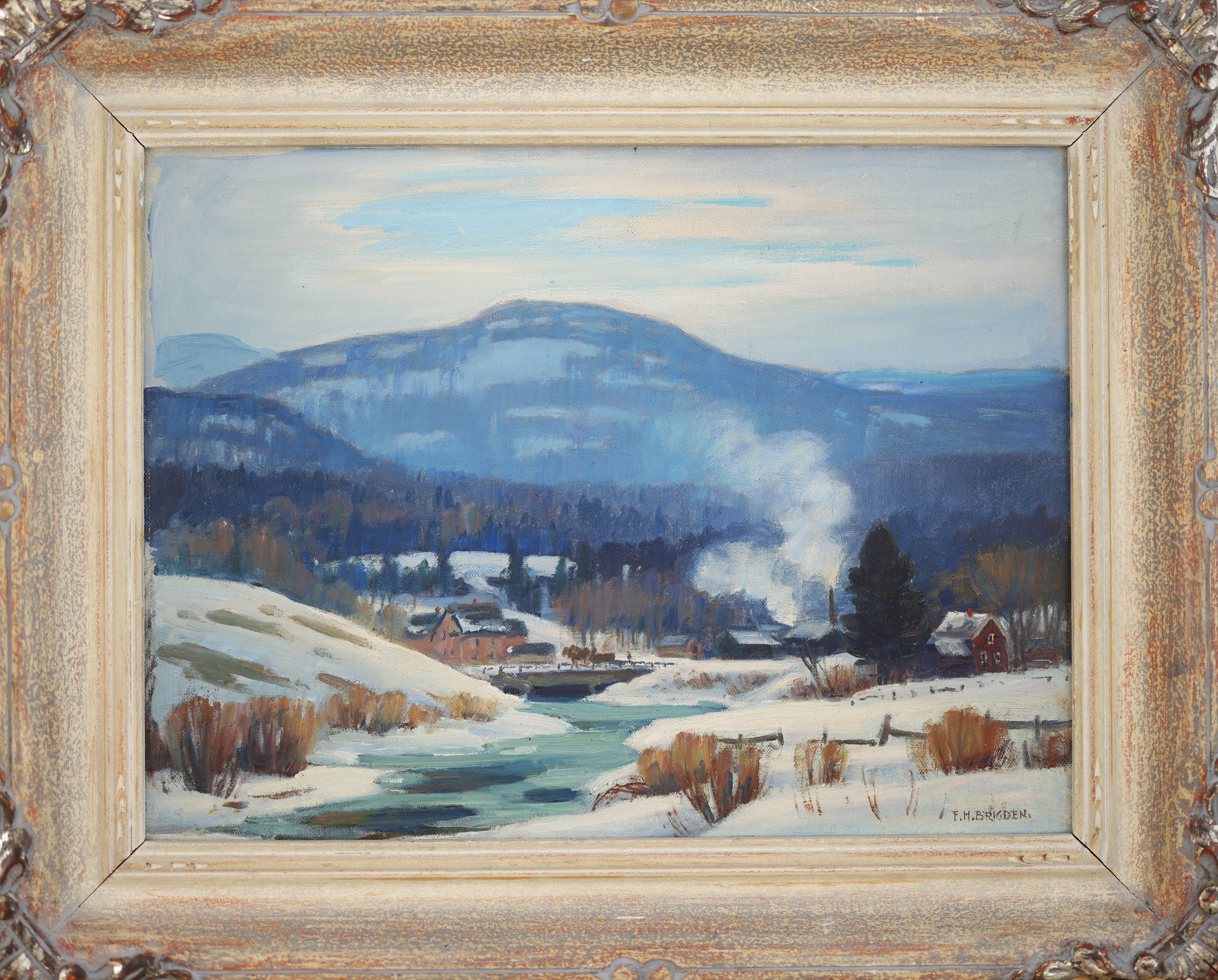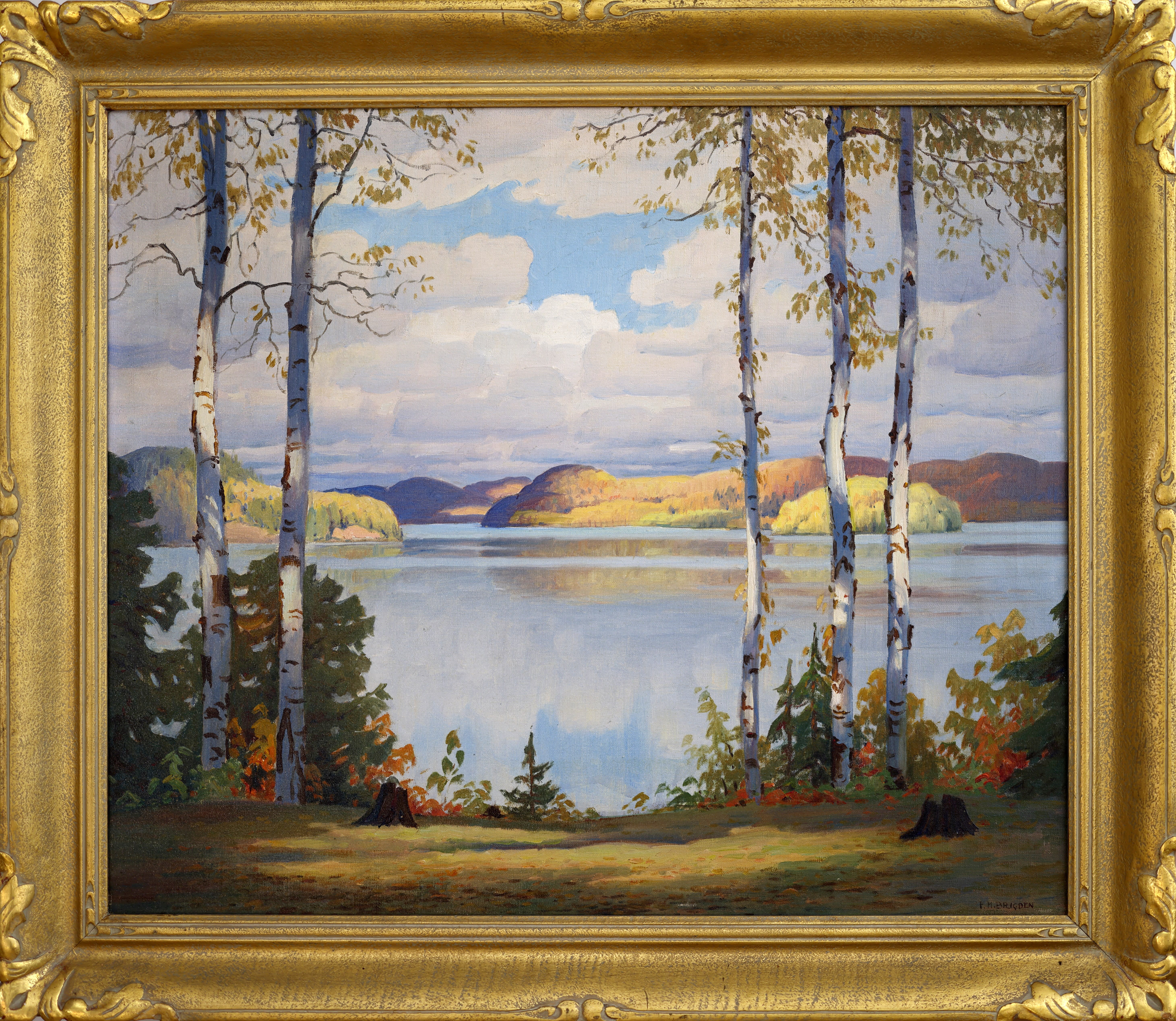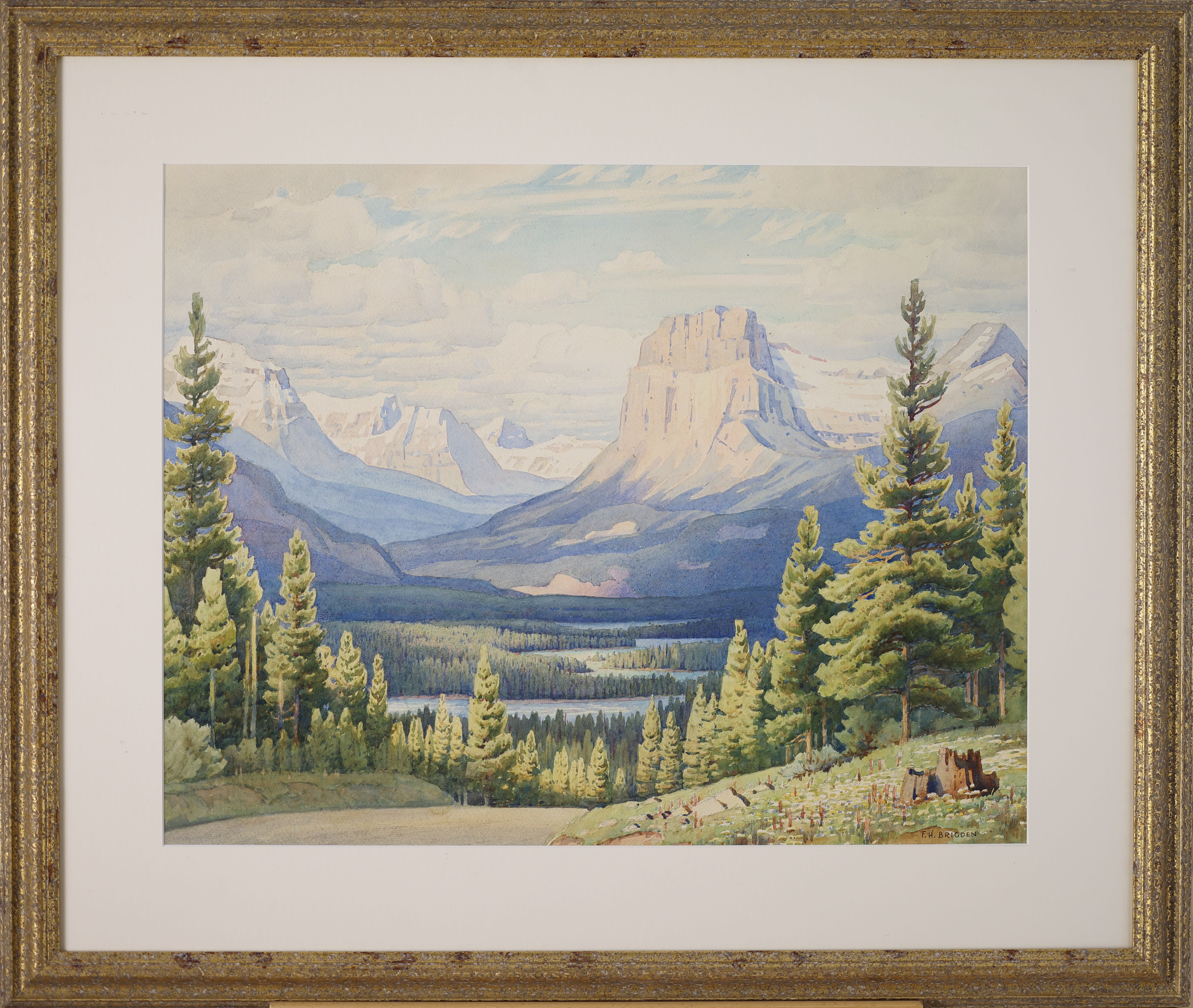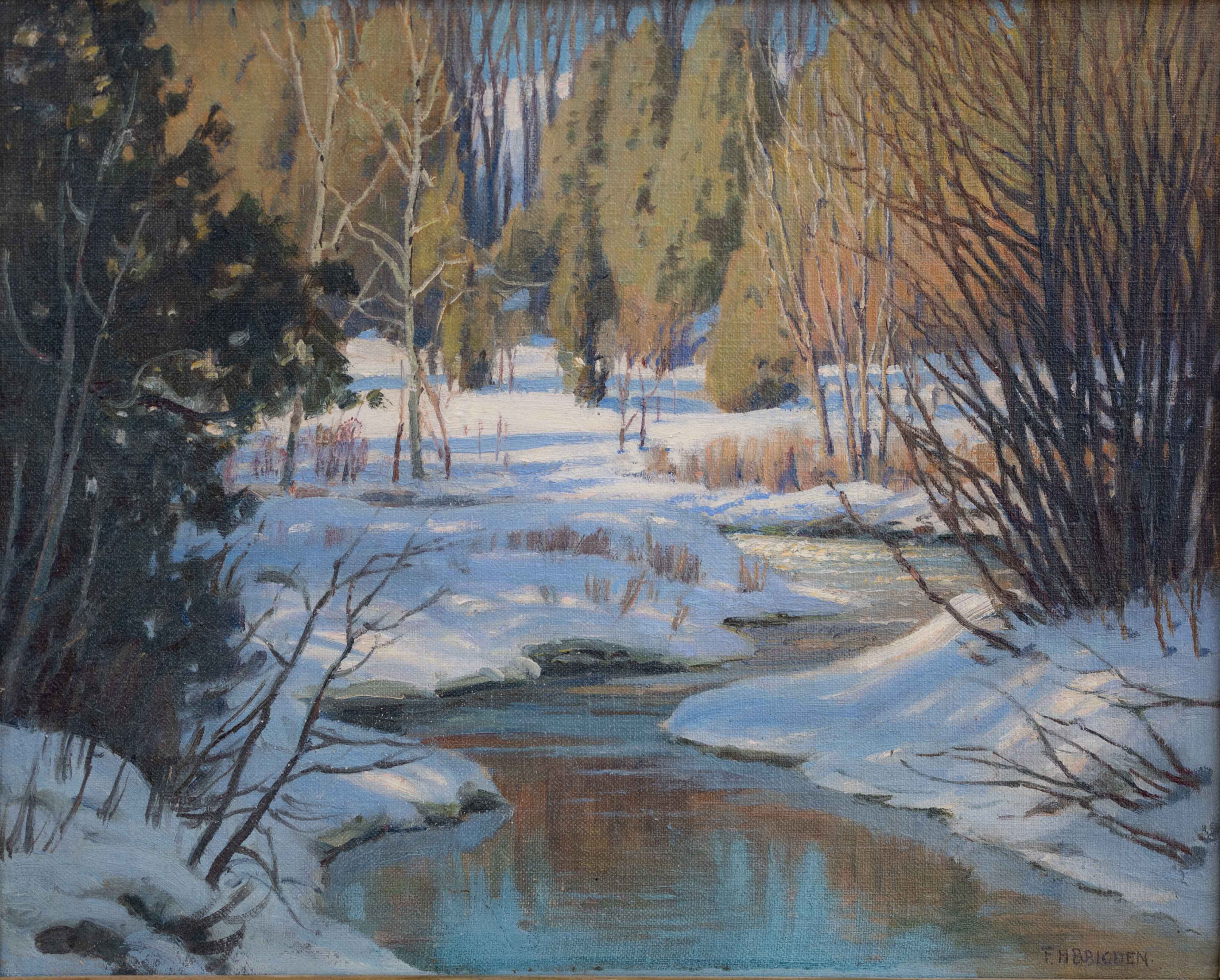Frederick Henry Brigden (April 9, 1871-1956), often recognized as F. H. Brigden, is a distinguished name in the Canadian art scene. From the rolling landscapes of Canada to the intricate details of engravings, Brigden's contributions span across diverse mediums and styles. Born in the heart of London and settling in Toronto as a one year old in 1872, his legacy is rooted deep in the artistic evolution of Canada.

Frederick Henry Brigden; South Bolton, Quebec
Brigden's initiation into the world of art was no coincidence. With a lineage rooted in artistry, his father Frederick Brigden Senior co-established the Toronto Engraving Company in 1877. By 1898, Fred had embraced the reins as the art director of the firm, eventually rebranding it as Brigdens Limited in 1910. His vision expanded beyond Toronto, with a new branch surfacing in Winnipeg in 1914. This branch not only extended their operations but also became a nurturing ground for budding artists like Charles Comfort, Caven Atkins, Fritz Brandtner, and Nicholas Raphael de Grandmaison.

Brigden's personal art journey is a tapestry of learnings, inspirations, and explorations. A prodigy in the making, he enrolled at the Toronto Art Student’s League, learning under the guidance of stalwarts like William Cruikshank and George Agnew Reid. His association with the Mahlstick Club further shaped his perspective, bringing him close to artists like J. E. H. MacDonald.
His style, initially reminiscent of traditional English watercolours, underwent a transformation post his maiden voyage to the northern territories of Canada around 1906. This journey, coupled with his exposure to global art in cities like London, Manchester, Brussels, and Buffalo, diversified his palette. Though Brigden was privy to the same post-Impressionist influences that inspired peers like J. E. H. MacDonald and Lawren Harris, he predominantly retained his affinity towards traditional English watercolour styles. His admiration for works like John Sell Cotman's watercolours during a 1924 England trip is a testament to this inclination.

Frederick Henry Brigden; Mountain Road
Beyond his personal creations, Brigden's passion for art manifested in his dedication to fostering the Canadian art community. In 1925, he co-founded and was elected the inaugural President of the Canadian Society of Painters in Water Colour. His memberships with the Ontario Society of Artists since 1898 and the Royal Canadian Academy of Arts from 1939 further highlight his prominence.
Today, his masterpieces grace the halls of renowned institutions like the National Gallery of Canada and the Art Gallery of Ontario. The world bid adieu to this luminary in 1956 during a sketching expedition in Bolton, Ontario, but his legacy continues to inspire.

Frederick Henry Brigden; Woodland Stream in Winter
Frederick Henry Brigden's life encapsulates a journey of relentless passion, continuous evolution, and unwavering dedication to Canadian art. From engravings to watercolours, his touch has left an everlasting mark on the canvas of art history.





